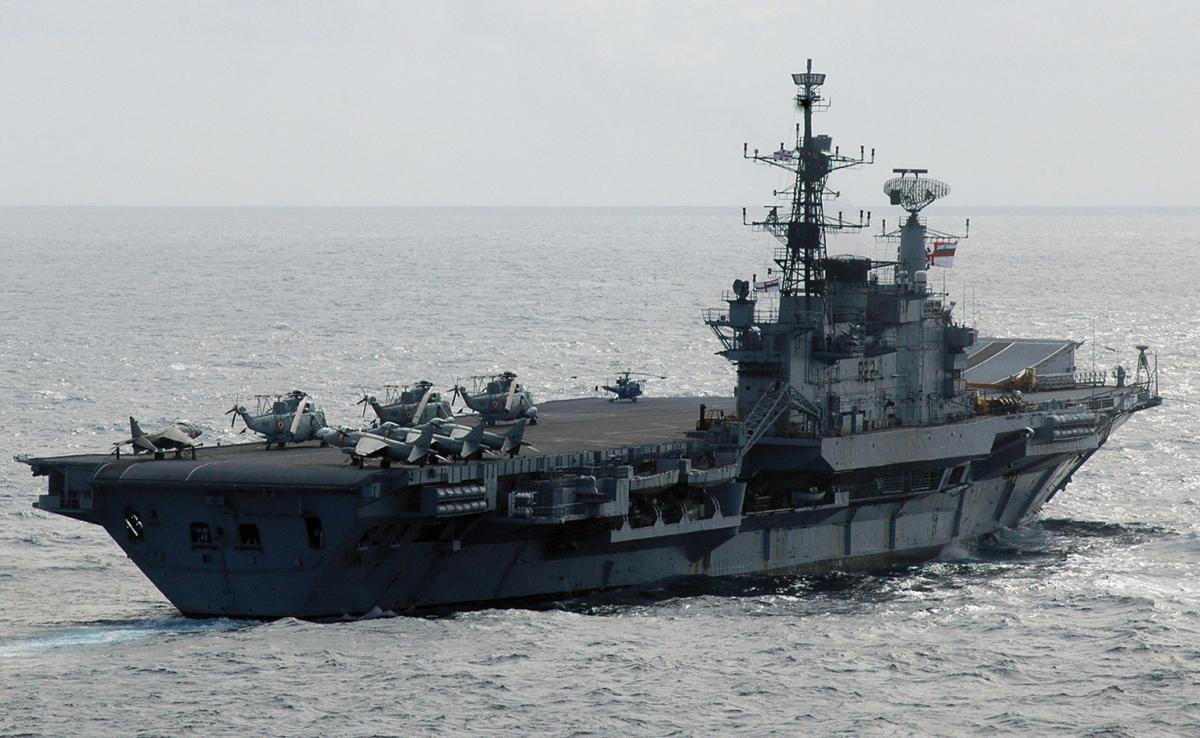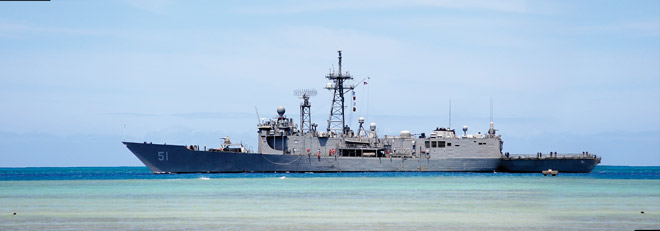In March, HMCS Athabaskan, the last Canadian guided-missile destroyer, was retired from service. The 5,000-ton ship was built in Canada and entered service in 1972. She was the third of the four-ship Iroquois class. Originally designed with an emphasis on antisubmarine warfare, the class underwent an upgrade in the early 1990s, changing the primary role to air warfare. Modifications included replacing the five-inch gun with a 29-cell Mk-41 VLS system, installing a three-inch gun forward of the bridge, and adding a Mk-15 Phalanx CIWS atop the helo hangar. During her 44 years, the Athabaskan supported the 1991 Gulf War, NATO operations in Afghanistan, and disaster relief efforts in the United States following Hurricane Katrina. A new class of multirole warships is expected to enter service in the mid-2020s to replace the Iroquois-class and Halifax-class frigates in the Canadian Navy.

Naval Press Service (M. Nitz)
On 6 March, India retired the world’s oldest active aircraft carrier, INS Viraat. The 28,000-ton carrier was ordered during World War II by the United Kingdom and laid down at Vickers-Armstrongs Shipyard in northwest England in June 1944. Work on the carrier was halted in 1945, but she was eventually launched in 1953, during the final months of the Korean War. Commissioned into the Royal Navy in 1959 as HMS Hermes, she served throughout the Cold War and operated as fleet flagship during the 1982 Falklands Conflict. Retired in the mid-1980s, she was transferred to India in 1986 and formally recommissioned on 15 February 1989. The Viraat will eventually be replaced by the domestically built carrier Vikrant, currently being fitted out at Cochin Shipyard. A Russian-built aircraft carrier, the INS Vikramaditya, entered the Indian fleet in 2013.

U.S. Navy (J.A. Johnston)
Taiwan has taken delivery of two Oliver Hazard Perry-class frigates that were retired from the U.S. Navy in 2015. The ex-Taylor (FFG-50) and ex-Gary (FFG-51, pictured here in U.S. service) were transferred on 9 March 2017 and have been renamed the Mingchuan and Fingjia. Both of the 4,000-ton warships entered U.S. service in 1984 and were armed with a single Mk-13 missile launcher, capable of employing SM-1 SAMs or Harpoon antiship missiles. The Mk-13 was subsequently removed from the class, but they retained a three-inch gun. Taiwan plans to acquire additional Seahawk helicopters to help fill the dual helicopter hangars on these ships. Media reports indicate the deal may have included the SQR-19 towed sonar array, which would provide a new ASW capability that had previously been excluded from Taiwan’s eight-ship PFG-2 class. The PFG-2s are Taiwan-built near-sisters of the Perry class that were constructed in Kaohsiung between 1990 and 2004.

U.S. Navy (T. Fulgham)


